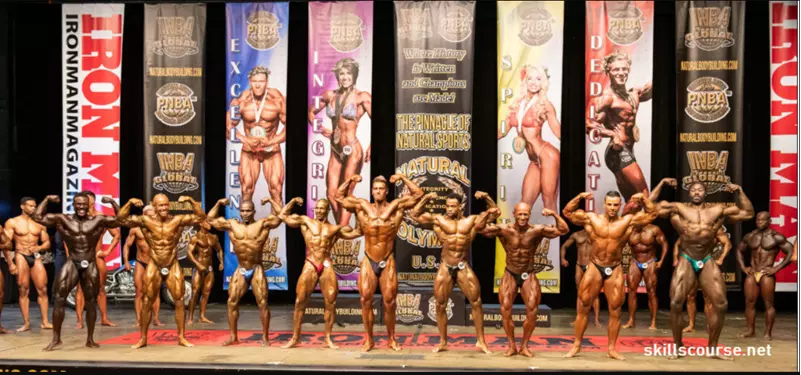Gym Experience
Bodybuilding Poses That Every Professional Should Know
Table of contents
Bodybuilding Poses That Every Professional Should Know
Bodybuilding involves more technical skill than you may believe, not just lifting bulky, flexible weights in front of a mirror. Posing is as crucial to the sport as weightlifting is. Look at the stage, Mr. Olympia. There are a lot of muscular competitors there who have a tendency to complete their total physique with grace and elegance, giving them the perfect look. However, there are those persons whose attractiveness is damaged by awkward poses, robotic poses, and stagnation.
Bodybuilding won’t be all that attractive if pose is fully eliminated from the equation; instead, it will just get gigantic, ripping off people on stage in some posing trunks.
Most likely, when you see a bodybuilder, you picture a large, bulky man with biceps, but there’s more to it than simply some biceps postures. Without posing, fitness exhibitions would not be possible. Legendary athletes like Kai Greene and Arnold Schwarzenegger have taken posing classes to display their greatest physiques on stage. You must learn how to pose properly whether you plan to compete or if you want to impress people with your figure.
Bodybuilding Poses
- Quarter Turns
- Front Lat Spread
- Front Double Bicep
- Side Chest
- Rear Lat Spread
- Rear Double Bicep
- Side Tricep
- Abdominals and Thighs
- Your Favorite Most Muscular
Quarter Turn Poses
The mandatory postures, in which the competitors stand facing the judges with with their lats flared out, start the pose round of a bodybuilding competition. When the command “turn to the right by a quarter” is given, the athlete rotates counterclockwise, with every pose until all the sides are done and he returns to the starting position.
Front Lat Spread
It all starts with the front lat spread on the stage. Although each pose has a primary muscle (like the lats in this pose), you can’t undermine the importance of the other muscles.
The front lat spread measures the width of your lats from the front, the thickness of your chest, the development of your shoulders, the size of your front arm, and the size of your forearm. Throughout the posing routine, make sure to focus on flexing your legs and showing the separation and muscle mass in your quadriceps, hamstrings, calves. One way to flex your legs from the front is to plant your heels and use the balls of your feet to “spread the floor”, meaning they are pushing away from you.
Front Double Bicep
The Front Double Bicep is one of the most popular and is frequently performed as the second pose on stage. It accentuates your biceps’ volume, definition, and peaks. Symmetrical triceps and forearms can increase the size of your arm and give the appearance of a larger and fuller arm.
The Front Double Bicep also requires showing your lat width and quadriceps size, as well as the definition and size of your forelegs.
Side Chest
When you turn to the right, you must perform a side chest pose to show the size and thickness of your breasts from the sides. When posing on stage, rotate your body to the side, grabbing your wrists and pulling your elbows towards you, while using your other arm to push the pectoral muscles together so they bounce.
This pose will reveal the arms, forearms, shoulders, hamstrings, quadriceps, and the size and contours of the calf muscles, in addition to the side chest. To show off your calves and hamstrings, “smash” one foot into the other and keep your front foot on tiptoe.
Rear Lat Spread
The rear lat spread will convey the width of your lats from the rear, the thickness of your trapezius, the size of your arms from the back, and the development and separation of the glutes and hamstrings.
It is performed in the same manner as the front buck, but from the back, with a focus on the glutes, hamstrings, and calves.
Rear Double Bicep
While your back is facing the judges, you hit the second back pose which is the rear double bicep. This pose demonstrates your arm size, biceps volume, and back peak. The Rear Double Bicep also demonstrates separation between your shoulders (particularly the hamstrings) and biceps.
This pose emphasizes the thickness and clarity of the back muscles, including the trapezius, subspinal, radial, and dorsum. The Rear Double Bicep pose helps to develop and separate your glutes, hamstrings, and calves.
Side Triceps
Side triceps pose demonstrates your triceps, particularly the lateral head, from the side you select. This position demonstrates your chest size, forearm development on one side, thigh separation, and calf development on the other.
To show off your hamstrings and calves, do the same move with your legs as you would with your side chest.
Abdominal and Thighs
The external intercostals, anterior serosa, quadriceps, and abdominal muscles develop and separate in the Abdominal and Thighs positions. This pose exposes all of your front muscles, including your arms, chest, shoulders, and calves. The majority of bodybuilders perform this move by putting their hands behind their heads and flexing their abs to show off their abs and oblique lines.
In this position, gastric suction is also commonly used.
Favorite Most Muscular
The favorite most muscular is the favorite pose of most bodybuilders. Bodybuilders with the most muscular posture have the most leverage to best show off their physique through the poses they enjoy.
Many bodybuilders hold the pose with one hand on the thigh and the other bent over the body. Others, like Phil Heath, perform the “crab version” of the pose, which involves bringing their arms and hands together at belly level.
Posing Wrap Up
Overall, posing is a form of art that brings the entire body together. However, not everyone is familiar with all of the poses, so here are 8 bodybuilding poses that everyone should be familiar with.

